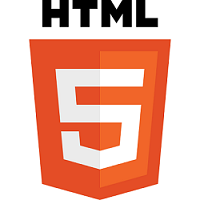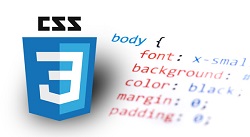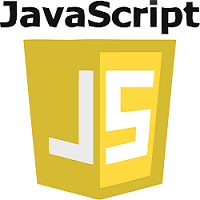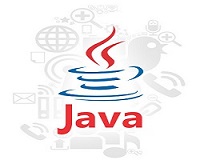You probably know that computers don't communicate with each other the way that people do. Instead, computers require codes, or directions. These binary codes and commands allow computers to process needed information. Every second, billions upon billions of ones and zeros are processed in order to provide you with the information you need.
So what does that have to do with your ability to post your latest pictures online? Everything.
The methods by which computers communicate with each other through the use of markup languages and multimedia packages is known as web technology. In the past few decades, web technology has undergone a dramatic transition, from a few marked up web pages to the ability to do very specific work on a network without interruption. Let's look at some examples of web technology.
In this portal we are going to cover many modules. Some of them are :
1. HTML(Hypertext Markup Language)
2. CSS (Cascading Style Sheet)
3. Java Script
4. XML(Extended Markup Language)
5. JQuery
6. Java

Hypertext Markup Language (HTML) is the standard markup language for creating web pages and web applications. With Cascading Style Sheets (css) and javascript, it forms a triad of cornerstone technologies for the World Wide Web.
Web browsers receive html documents from a web server or from local storage and render the documents into multimedia web pages.Html describes the structure of a web page semantically and originally included cues for the appearance of the document.
html elements are the building blocks of html pages. With html constructs, images and other objects such as interactive forms may be embedded into the rendered page. Html provides a means to create structured documents by denoting structural semantics for text such as headings, paragraphs, lists, links, quotes and other items.Html elements are delineated by tags, written using angle brackets. Tags such as img and input directly introduce content into the page. Other tags such as paragraph tag surround and provide information about document text and may include other tags as sub-elements. Browsers do not display the html tags, but use them to interpret the content of the page.

Cascading Style Sheets (CSS) is a style sheet language used for describing the presentation of a document written in a markup language like html. CSS is a cornerstone technology of the World Wide Web, alongside html and javascript.
css is designed to enable the separation of presentation and content, including layout, colors, and fonts. This separation can improve content accessibility, provide more flexibility and control in the specification of presentation characteristics, enable multiple web pages to share formatting by specifying the relevant css in a separate .Css file, and reduce complexity and repetition in the structural content.
Separation of formatting and content also makes it feasible to present the same markup page in different styles for different rendering methods, such as on-screen, in print, by voice (via speech-based browser or screen reader), and on Braille-based tactile devices.Css also has rules for alternate formatting if the content is accessed on a mobile device.
The name cascading comes from the specified priority scheme to determine which style rule applies if more than one rule matches a particular element. This cascading priority scheme is predictable.

JavaScript often abbreviated as JS, is a high-level, interpreted programming language. It is a language which is also characterized as dynamic, weakly typed, prototype-based and multi-paradigm.
Alongside html and css, javascript is one of the three core technologies of the World Wide Web.JavaScript enables interactive web pages and thus is an essential part of web applications. The vast majority of websites use it,and all major web browsers have a dedicated javascript engine to execute it.
As a multi-paradigm language, javascript supports event-driven, functional, and imperative (including object-oriented and prototype-based) programming styles. It has an API for working with text, arrays, dates, regular expressions, and basic manipulation of the DOM, but the language itself does not include any I/O, such as networking, storage, or graphics facilities, relying for these upon the host environment in which it is embedded.
Initially only implemented client-side in web browsers,javascript engines are now embedded in many other types of host software, including server-side in web servers and databases, and in non-web programs such as word processors and PDF software, and in runtime environments that make javascript available for writing mobile and desktop applications, including desktop widgets.

Jquery is a cross-platform javascript library designed to simplify the client-side scripting of html.It is free, open-source software using the permissive MIT License.Web analysis indicates that it is the most widely deployed Javascript library by a large margin.
jquery's syntax is designed to make it easier to navigate a document, select DOM elements, create animations, handle events, and develop Ajax applications.Jquery also provides capabilities for developers to create plug-ins on top of the javascript library. This enables developers to create abstractions for low-level interaction and animation, advanced effects and high-level, themeable widgets. The modular approach to the jquery library allows the creation of powerful dynamic web pages and Web applications.
The set of jquery core features—DOM element selections, traversal and manipulation—enabled by its selector engine (named "Sizzle" from v1.3), created a new "programming style", fusing algorithms and DOM data structures. This style influenced the architecture of other javascript frameworks like YUI v3 and Dojo, later stimulating the creation of the standard Selectors API.

Extensible Markup Language (XML) is a simple, very flexible text format derived from SGML (ISO 8879). Originally designed to meet the challenges of large-scale electronic publishing, XML is also playing an increasingly important role in the exchange of a wide variety of data on the Web and elsewhere.
This page describes the work being done at W3C within the XML Activity, and how it is structured. Work at W3C takes place in Working Groups. The Working Groups within the XML Activity are listed below, together with links to their individual web pages.
You can find and download formal technical specifications here, because we publish them. This is not a place to find tutorials, products, courses, books or other XML-related information. There are some links below that may help you find such resources.
You will find links to W3C Recommendations, Proposed Recommendations, Working Drafts, conformance test suites and other documents on the pages for each Working Group. Each document also contains email addresses you can use to send comments or questions, for example if you have been writing software to implement them and have found problems or errors.
Please do not send us email asking us to help you learn a language or specification; there are plenty of resources online, and the people editing and developing the specifications are very busy. We are interested in technical comments and errata.

Java is a general-purpose computer-programming language that is concurrent, class-based, object-oriented,and specifically
designed to have as few implementation dependencies as possible. It is intended to let application developers "write once,run
anywhere"(WORA),meaning that compiled Java code can run on all platforms that support Java without the need for
recompilation.Java applications are typically compiled to bytecode that can run on any Java virtual machine(JVM) regardless of
computer architecture. As of 2016, Java is one of the most popular programming languages in use,particularly
for client-server web applications, with a reported 9 million developers.Java was originally developed by James Gosling
at Sun Microsystems (which has since been acquired by Oracle Corporation) and released in 1995 as a core component of Sun
Microsystems' Java platform. The language derives much of its syntax from C and C++, but it has fewer low-level facilities
than either of them.